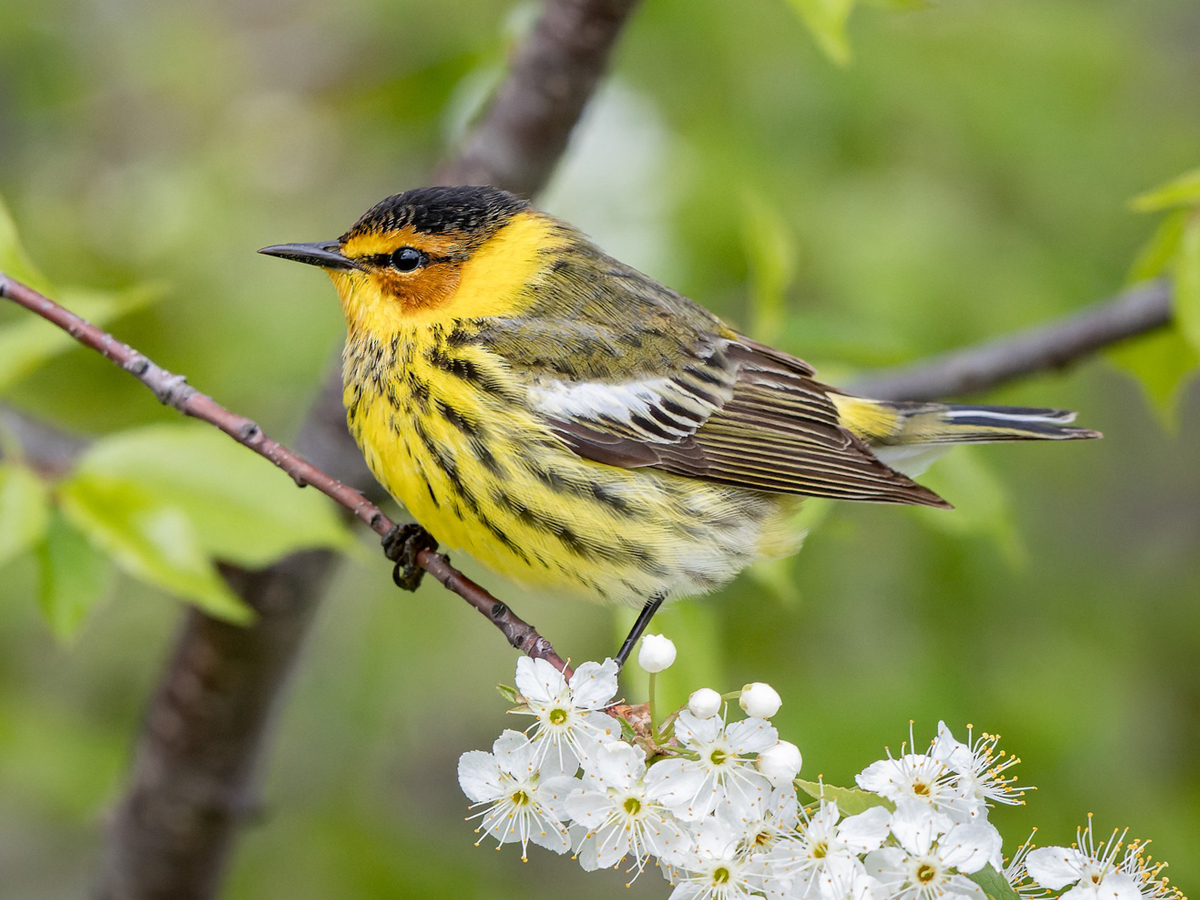How to ID Palm Warblers, Cape May Warblers, and Prairie Warblers



Warblers are some of our favorite spring visitors. They’re colorful, charming, and rewarding to find, but they can make for very tricky IDs! These three migratory warbler species are similarly yellow and streaky. Even so, there are a few helpful keys to make an ID. Check out our quick review below.
| Visual Clue | Palm Warbler | Cape May Warbler | Prairie Warbler |
|---|---|---|---|
| Cap and Face | Rufous or chestnut cap, not always present in fall. Yellow or pale eyebrow stripe. | Males have a chestnut mask and dark cap, while females’ faces are streaked with yellow and gray. | No cap. Males have a dark eyeline, yellow eyebrow, and yellow spectacles. Females have an indistinct eyebrow. |
| Chest and Front | Lots of individual variation! Most individuals have chestnut streaks on the chest and sides. Yellow throat and front can vary in intensity from bright to buffy. | Males have dark streaks on a yellow chest and sides. Females’ streaks are paler. | Males have stark black streaks on the sides and flanks. Females’ streaks are paler. |
| Back and Tail | Yellow under tail, often contrasting with paler belly. | White under tail, contrasting with yellow belly. | Males have a chestnut spot or streaks on the back. Yellow under tail blends with yellow belly. |
| Behavior | Constantly wags its tail. Often found on the ground. | No tail wagging. Usually found in the canopy. | Wags its tail. Usually found up in short trees in open areas. |
Have you got all of that? Put these clues to the test with Bird Academy’s SnapID tool and practice distinguishing among these three warbler species. You can replay the quiz as many times as you want. Each time you hit “Play Again,” you’ll have new photo matchups to practice on. Just click “Start SnapID Challenge” to get started!
Test Your Warbler ID Skills
Interested in going further with the rewarding realm of warbler identification? Check out our self-paced, online course Be a Better Birder: Warbler Identification. In this course, you’ll explore ID strategies and species-specific video portraits for 51 warbler species that regularly appear in the continental U.S. and Canada, then reinforce what you’ve learned with quizzes to help you along the way. Find out what this course has in store with a free sample lesson about the Yellow Warbler.
